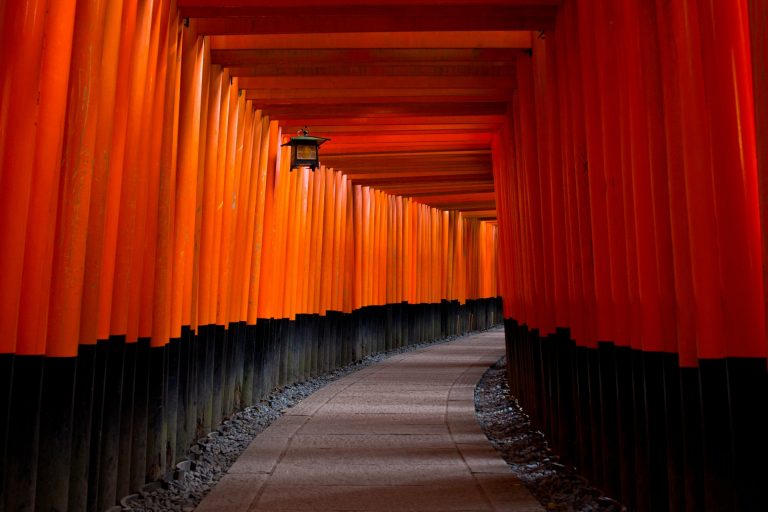The world is full of mystery and wonder, yet our lives are often so focused and structured that we overlook the beauty around us. Sometimes it is good to break away from the mundane and consider the quirky, to revive a sense of curiosity that can help us appreciate the gift of our natural environment. Oddities of nature also present opportunities to open the mind and exercise the imagination.
1. Floating Eye Island
There is a small island in Argentina which is curious for many reasons. Located in the Parana Delta between the cities of Campana and Zarate in Buenos Aires, this island not only floats, but also moves. While there are actually many cases of floating islands around the world, this one gained its name and recognition due to its highly symmetrical circular shape, as well as the circular shape of the small body of water it sits in. Together, they resemble the shape of an eye. Collected aerial images reveal that the island is slowly turning within its pool.
One can imagine all the possible explanations for such an unusual landform… Some believe it is a supernatural phenomenon, others suspect that it is man made. Considering the high number of UFO sightings reported in Argentina, there are also those who believe it to be a portal for aliens. Examining similar situations in nature can give us some valuable insight.
With other floating islands, it is generally believed that they formed as masses of vegetation broke away from the edge of a body of water, and with their roots no longer embedded in solid soil, floated out into the water, forming an island. This island could grow, or join with other loose masses of plant material to form a substantial, self-sustaining floating island. Water currents naturally cause these islands to move about, or rotate.
As for the circular form, A very close replication of the “eye” was formed in ice. The Westbrook Ice Disk, observed floating and rotating in the Presumpscot River in Maine during the winter of 2019, resembles “The Eye” in its perfectly formed shape and rotating motion. With underwater currents keeping the body in motion, the circular regularity may have been gradually achieved through friction, as the island rubbed against the shore in its continual rotation around the pool, much like the polishing of rocks in a tumbler where the surface becomes round and smooth.
2. Hell’s Gate
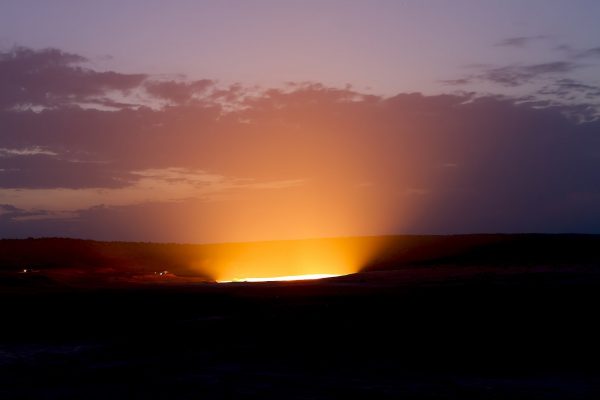
Success
You are now signed up for our newsletter
Success
Check your email to complete sign up
Turkmenistan, one of the least traveled countries in the world, hosts a tourist attraction that is growing in popularity. The Gates of Hell in Derweze is a large crater in a natural gas field, covering an area of over 5,000 square meters (over an acre), which has been on fire for four to six decades, depending on the narrator. Many trace its origin back to an exploratory expedition in 1971 by Soviet Engineers assessing the quantity of oil in the Karakum Desert field.
According to this story, their equipment was so heavy that the mine collapsed. There were no casualties, but the methane gas released was determined to be dangerous. It was intentionally set aflame with the assumption that the gas would burn off relatively quickly, but it has been burning ever since. Others attribute an earlier formation of the crater by mudflow, or even underground water movement, with the flame starting as late as the 80s.
While thousands of tourists have visited the glowing out-of-the way attraction, only one man, Canadian-born George Kourounis, has descended to the depths of the crater. In his pursuit of life in extreme conditions, the scientific explorer obtained hard won permits from the Turkmenistan government, a democracy with a communist majority rule. Sporting custom gear and supported only by a fire resistant rope, Kourounis was lowered into the bottom of the blazing hot, methane filled pit. With little time to spare, he collected his soil samples; lingering may have cost him his life. The analyzed samples indicated that microscopic life thrives in the extreme temperatures.
While many other methane leaks have been known to catch fire around the world, Hell’s Gate is unique in that the crater pocket prevents wind from both extinguishing the fire and dispersing the methane. It is most stunning at night, of course, when the whole form is aglow. Moths are attracted to the light at dusk, which then attracts masses of birds to the crater. Tourists have been known to endure freezing temperatures to camp outside the inferno.
3. Ringing Rocks
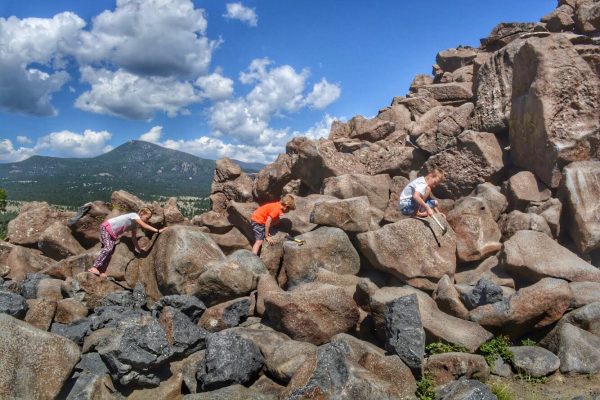
While Pennsylvania is host to a number of boulder parks, one stands out as a gem. Ringing Rocks 123 acre park, located in Bucks County, is not only a paradise for climbing and exploring, but also a musical landscape. Many of the rocks possess an unusual characteristic which causes them to make a tone when struck with a hammer. The tones are described as metallic, and on a very small scale are likened to the sound achieved when striking the handle of a ceramic mug.
1965 lab tests by geologist Richard Fass revealed that the tones created by striking the rocks were at frequencies inaudible to the human ear. He determined that the tones become audible only through interacting with one another. Through experimentation, it was later discovered that the tones could be manipulated by chipping away small bits of rock, thereby making it possible to produce a lithophone with a complete musical scale.
Ringing rocks are part of a group of diabase sills extending from southeastern PA to central New Jersey in the Newark Basin, a partial rift formed at the time of continental drift. These sills formed 220 million years ago, when mafic magma moved into the sedimentary basin of the upper mantle. In the process, the minerals olivine and pyroxene settled out of the magma and crystalized. Some speculate that the unique material composition is responsible for the rocks’ capacity to ring, while findings from studies at Rutgers University in the 1960’s suggest that it is internal pressure which enables the sonorous effect.
4. Mother Shipton’s Cave
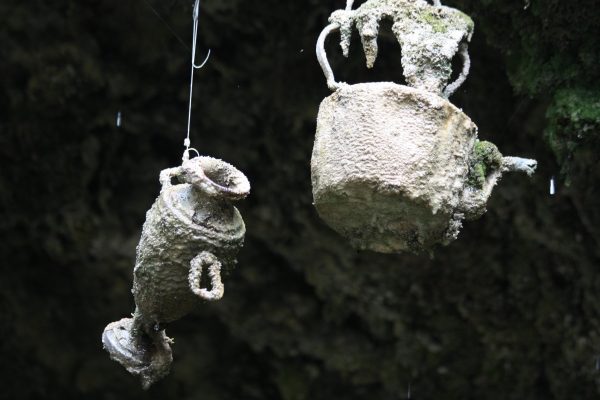
In operation since 1630, Mother Shipton’s Cave is the oldest fee-charging tourist site in England. According to legend, Ursula Southeil was born in this cave in 1488 under unusual circumstances. She later became the wife of Toby Shipton, and legendary soothsayer and prophetess Mother Shipton. Exhibiting prophetic and psychic powers early in life, she made predictions and told fortunes as her livelihood. While she married at age 24, she never had children of her own; but was known as Mother Shipton because she helped so many people with her work.
The cave in which she was born contains a mysterious petrifying well. Anything left in the well will, over a period of weeks or months, take on a stony appearance and texture. While this was once considered to be a form of witchcraft, it is now understood that what actually occurs is that the object is overlaid with a stony crust due to the high concentration of minerals in the sulphuric well. This process should not be confused with true petrification, whereby the object itself becomes fossilized as the organic matter is replaced with molecules of stone and mineral over an extremely long period of time.
5. Eternal Flame Waterfall
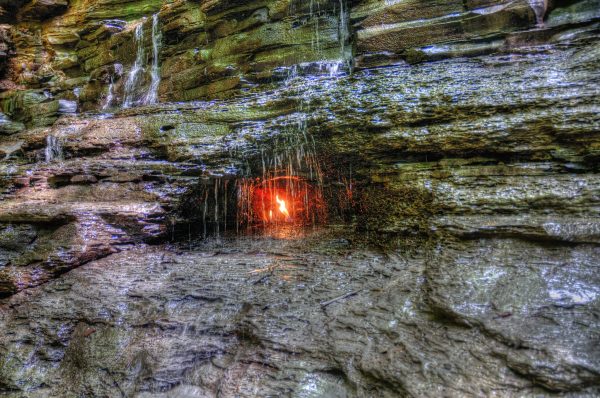
In New York’s Erie County, Niagara Falls is not the only waterfall attraction to look out for. If you prefer to avoid the crowds when visiting the wonders of the world, put Eternal Flame Falls on your list. Going along Shale Creek in Chestnut Ridge Park, you will find a waterfall lit from behind. While the appearance is both mystical and magical, the source of the light is a flame fueled by a continuous methane gas leak, seeping through cracks in the rock. Despite its name, the flame does get doused by water and sometimes goes out. It is thus recommended to bring a lighter just in case.
As summer approaches, and travel restrictions ease, consider exploring something out of the ordinary. Structures with mysterious origin or sites known for unusual sightings will always peak curiosity. While science often steps in to explain away unusual phenomena, try suspending the urge to rationalize everything and relish in the possibility of magic and miracles. A sense of awe and wonder is good for both the mind and body.



